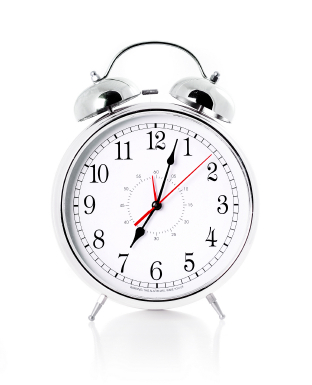What are they ?
Circadian rhythm disorders form a distinct subgroup of sleep-wake disorders, leading to a mismatch between an individual’s sleep schedule and the timing of the signals from the circadian clock. These conflicts arise from a variety of external pressures or lifestyle choices and result in fatigue, poor job or school performance, and sleep disturbances (especially difficulty falling asleep or waking up at desired times).
Common circadian rhythms and sleep disorders
Night shift work
Individuals who work at night are asked to perform their jobs at a time that conflicts with the sleep-wake regulating signals from the circadian clock. This mismatch contributes to reduced alertness and job performance, increased risk of accidents and inadequate daytime sleep. After a night shift, workers may sleep one to three hours less than when working the day shift.
Jet lag
Each year, millions of travelers suffer from jet lag after rapid flight across multiple time zones, causing substantial deterioration of vigilance and performance after arrival at their destination. In practical terms, the circadian clock normally takes longer to reach the destination than the flight. The severity of jet lag depends on both the direction of flight and the number of time zones crossed.
- Eastward flights are associated with difficulty falling asleep, sleep disturbances in the first half of the night, difficulty awakening, and fatigue in the morning/early afternoon.
- Westward flights are associated with poor sleep quality in the second half of the night, early morning awakening, and fatigue in the late afternoon or evening.
Advanced Sleep Phase Syndrome (ASPS)
Advanced Sleep Phase Syndrome (ASPS) is more frequently reported in older individuals and is characterized by evening sleepiness and early morning awakening. Sleep quality is generally normal if individuals initiate sleep early, symptoms emerge when they stay up later.
Delayed Sleep Phase Syndrome (DSPS)
Delayed Sleep Phase Syndrome (DSPS) is characterized by a delay in the main sleep episode and an inability to fall asleep or wake up at desired times. DSPS patients are extreme «night owls», with bedtimes frequently observed around 3 to 6 a.m. and wake times around 12 to 3 p.m. Sleep quality and duration are normal when individuals sleep at their preferred biological times.
Symptoms appear when individuals force themselves to go to sleep earlier to accommodate early rising. This pattern results in a conflict with morning school or work hours. This syndrome often emerges after puberty and is more common among adolescents and young adults.
Non-24-hour sleep-wake syndrome
Patients with this syndrome have sleep onset times that, each day, diverge by one to two hours from the previous day. Sleepiness and sleep disorders appear on the days when their internal rhythms are out of phase with habitual work-life constraints.
The patients will have less difficulty adapting during the period when they drift into synchrony with more typical schedules. This condition is uncommon in people with normal vision, but blind patients lacking light input to the clock are more likely to suffer from this syndrome.
Who is affected?
Approximately, one-quarter of the general adult population, 40 percent of severely time-stressed people and about 30 percent of shift workers regularly have difficulties going to sleep or staying asleep (Statistics Canada Datas).
Causes of sleep disorders
There is no single factor that causes circadian rhythm sleep disorders. However, research findings suggest that some circadian rhythm disorders have a genetic basis. For example, familial ASPS, which causes extreme "early-bird" tendencies in families, is related to a gene mutation.
Other causes of circadian rhythm sleep disorders may include:
- Medical conditions such as, neurological disease, or cancer
- Mood disorders, such as depression or anxiety
- Schedule changes, such as working the nightshift.
Circadian rhythms, sleep and mental health
There is increasing evidence that disorders of the circadian clock can contribute to the state of certain psychiatric conditions. Improvement of Winter Seasonal Affective Disorder (SAD) is reported following light-induced phase shifts in the melatonin rhythm.
Sleep deprivation, light therapy and drugs improving sleep structure could be beneficial for major depression during the depressive phases of bipolar affective disorder. Recent evidence associating genetic components of the circadian clock with the likelihood of psychiatric disorders as well as with their targets for drug treatment continue to prompt interest in the interaction between the circadian clock and mental health.
This content was developed by Diane Boivin, MD, PhD, director of the Centre for Study and Treatment of Circadian Rhythms.
[Circadian Rhythms: what are they?] [Circadian Rhythms: the effect of the light] [Circadian Rhythm Disorders] [Circadian rhythms disorders: a few tips]



